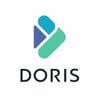With the ever-increasing advancements in technology in our day to day lives, there's an increase in the amount of data being generated. This has necessitated the need for data analysts and data scientists to analyse the raw data so as to make sense of it.
There are a variety of specializations in the data industry that beginners need to familiarize themselves with before deciding which one suits them best. They include data architects, data analysts, data engineers, machine learning engineers, business analysts, analytics engineers among others.
Globally, more and more people are seeking to join the field of data science and analytics. There is an abundance of resources that beginners can tap into as they start their journey into data. Below is a guide for those looking to venture into data science and analytics.
Data collection/gathering
Usually, most organizational data will be stored in databases in structured formats. However, data can be unstructured or semi structured depending on how its collected and stored. Therefore, it becomes useful for data analysts to be knowledgeable of data structures and data warehousing.
Additionally, data analysts may be required to extract data from websites and structure it in a manner that allows for meaningful analysis. Some tools used in web scrapping include Beautiful Soup and Selenium.
Data Manipulation
This is usually a vital step in data analytics and can also be referred to as exploratory data analysis (EDA). while manipulating data, it's important to note data exists in various forms (text, videos or images). Here, data is cleaned, processed and transformed with the aim to identify trends and getting a general outlook of the data. With this, data can be grouped, missing values identified and unwanted values removed.
Some key tools for this are MS Excel and Google Sheets, which are universally used in the business sector for computation and analysis. They offer a wide range of inbuilt functions necessary for manipulating data.
Maths and Statistics.
Data is either quantitative or qualitative i.e., numeric or non-numeric. Data specialists should be able to perform both simple and complex mathematical and statistical operations on data sets to identify historical trends and predict future outcomes.
For these, beginners should know basics of descriptive statistics, inferential statistics and probability.
Programming
Whereas there are many programming languages that can be used in data analytics, beginners should at least know the fundamentals of R and Python. These are easy to grasp and use in addition to being open source.
Python, in particular, is widely used across different sectors/industries and comes with inbuilt libraries for data analysis and visualizations. They include Pandas, NumPy, Matplotlib, Seaborn among others.
Additionally, people starting out in data analytics should learn SQL (Structured Query Language) which manages and manipulates relational databases.
Visualizations
In addition to Matplotlib and Seaborn libraries for visualizations, other programs may be used to create graphs and tables that are easily understandable to all users.
The most common tools are Tableau, Power BI and Looker, which are useful for developing visualizations that can be used for deriving insights and enabling better decision making for the stakeholders.
Another emerging aspect of visualizations is data physicalisation. This involves use of tangible interfaces and shape changing displays that would be of use to visually impaired stakeholders.
Machine Learning
The patterns and trends identified during data manipulation and analysis can be used to make future predictions. This is what machine learning (ML) entails. Machine learning engineers use data and algorithms to train models in a variety of ways which can either be supervised, unsupervised, semi supervised or reinforcement learning.
Python has inbuilt frameworks for ML like Scikit Learn and Tensor Flow.
In a nutshell, data analytics encompasses many tools and techniques which complement each other. Ability to work with these tools enhances both individual and organizational skills when handling and interpreting data.
It is worth remembering that data analytics also requires skills in problem solving, communication and domain knowledge.







Top comments (0)